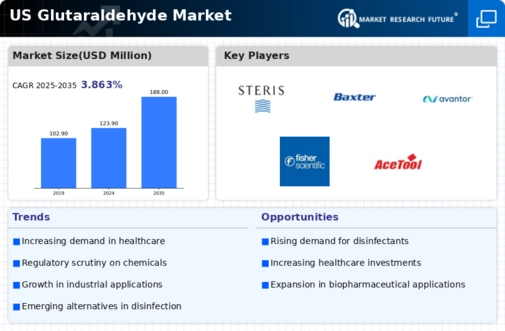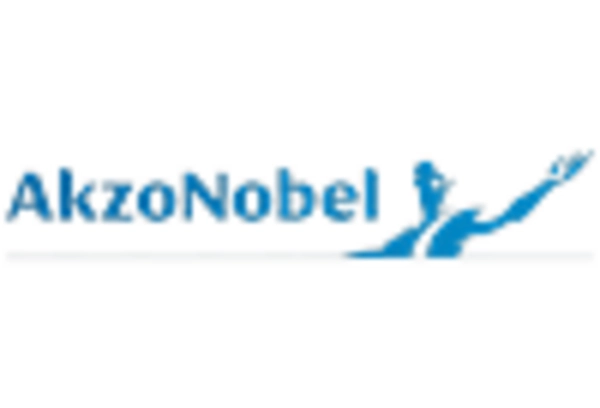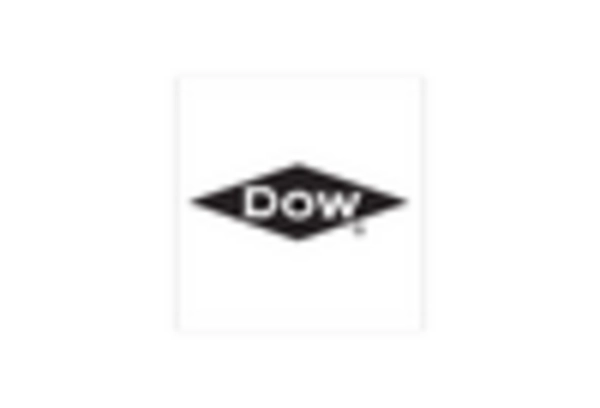The glutaraldehyde market exhibits a competitive landscape characterized by a blend of established players and emerging innovators. Key growth drivers include increasing demand in healthcare for sterilization and disinfection, alongside expanding applications in the textile and chemical industries. Major companies such as BASF SE (DE), Huntsman Corporation (US), and The Dow Chemical Company (US) are strategically positioned to leverage these trends. BASF SE (DE) focuses on innovation and sustainability, aiming to enhance its product offerings while reducing environmental impact. Huntsman Corporation (US) emphasizes regional expansion and partnerships to strengthen its market presence, while The Dow Chemical Company (US) is investing in digital transformation to optimize its operations and supply chain efficiency. Collectively, these strategies shape a competitive environment that is increasingly focused on sustainability and technological advancement.
In terms of business tactics, companies are localizing manufacturing to reduce lead times and enhance responsiveness to market demands. Supply chain optimization remains a critical focus, particularly in light of recent global disruptions. The market structure appears moderately fragmented, with a mix of large multinational corporations and smaller niche players. The collective influence of these key players is significant, as they drive innovation and set industry standards, thereby shaping the overall market dynamics.
In October 2025, BASF SE (DE) announced a new initiative aimed at enhancing its glutaraldehyde production capabilities through advanced manufacturing technologies. This strategic move is likely to bolster its competitive edge by improving efficiency and reducing production costs, thereby allowing for more competitive pricing and increased market share. The emphasis on advanced technologies aligns with the broader industry trend towards digitalization and automation.
In September 2025, Huntsman Corporation (US) entered into a strategic partnership with a leading healthcare provider to develop customized glutaraldehyde formulations tailored for specific sterilization applications. This collaboration not only enhances Huntsman's product portfolio but also positions the company as a key player in the healthcare sector, where stringent sterilization standards are paramount. Such partnerships may facilitate deeper market penetration and foster innovation in product development.
In August 2025, The Dow Chemical Company (US) launched a new line of eco-friendly glutaraldehyde products designed to meet the growing demand for sustainable solutions in various industries. This initiative reflects a broader trend towards sustainability, as companies increasingly seek to align their offerings with environmental considerations. By prioritizing eco-friendly products, Dow is likely to attract a more environmentally conscious customer base, thereby enhancing its competitive positioning.
As of November 2025, current competitive trends in the glutaraldehyde market are heavily influenced by digitalization, sustainability, and the integration of AI technologies. Strategic alliances are becoming increasingly important, as companies recognize the value of collaboration in driving innovation and expanding market reach. The competitive landscape is shifting from a focus on price-based competition to one that emphasizes technological advancement, product differentiation, and supply chain reliability. This evolution suggests that companies that prioritize innovation and sustainability will likely emerge as leaders in the market.

















Leave a Comment